
Zero DSR: Could This Be the Best-Value Electric Bike Yet?
Overall Rating - A Great Option for Commuting
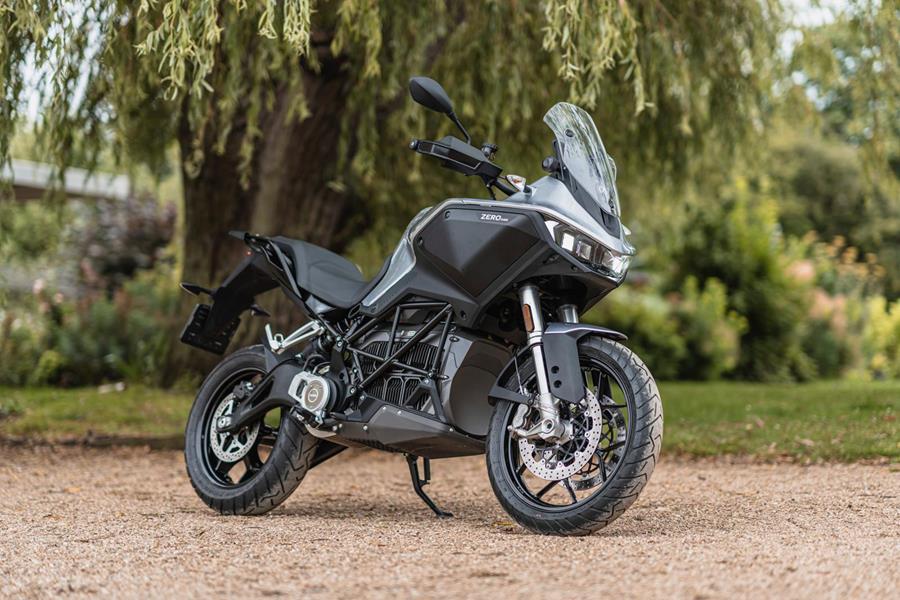
Zero DSR: The Accessible Electric Adventure Bike
The Zero DSR is an electric adventure motorcycle that offers a more affordable entry point into the world of electric off-roading. It's essentially a stripped-down version of the flagship Zero DSR/X, with some key differences in performance and features.
Key Specifications
| Feature | DSR | DSR/X |
|---|---|---|
| Power | 150 bhp | 200 bhp |
| Range | 180 miles (city) | 200 miles (city) |
| Price | $17,995 | $22,495 |
Performance Trade-offs
The DSR sacrifices some power and range compared to the DSR/X, resulting in a 30% reduction in power and a 10% reduction in range. This trade-off allows for a 20% price reduction, making the DSR a more accessible option for riders looking for an electric adventure bike without the top-of-the-line price tag.
Real-World Applications
The DSR is ideal for riders who:
- Value affordability: The DSR offers a more affordable price point compared to the DSR/X, making electric adventure riding accessible to a wider audience.
- Prioritize practicality: The DSR's reduced power and range may be sufficient for most riders, especially those who prioritize practicality and cost-effectiveness.
- Enjoy the simplicity: The DSR's stripped-down design and reduced features may appeal to riders who prefer a cleaner, less complex riding experience.
Comparison to the DSR/X
While the DSR offers a more affordable price point, it does come with compromises in performance. The DSR/X offers higher power and range for riders who demand the most from their adventure bike.
Important Note: The DSR and DSR/X are both electric adventure bikes with unique strengths and weaknesses. The best choice for you depends on your individual needs and preferences.
A2-Licence Compliant Electric Adventure
DSR: A2-Licence Compliant Powerhouse
The DSR, Zero Motorcycles' latest offering, boasts impressive performance while maintaining A2-licence compliance. Despite packing nearly 50% more power than the 47bhp limit for petrol bikes, it adheres to regulations, making it an appealing choice for new riders.
- Power Output: The DSR delivers a peak power output of 70 bhp (52 kW), exceeding the typical A2-licence limit by a significant margin.
- Torque: Its electric motor generates substantial torque, providing instant acceleration and a smooth, responsive riding experience.
Upgrade Offer: Exceptional Value
Zero Motorcycles is currently offering a limited-time deal allowing riders to add £4000 worth of upgrades for just £350. This significant discount includes features such as:
- Performance Enhancements: Increased power output and torque, further enhancing the DSR's already impressive performance.
- Technology Upgrades: Advanced rider assistance systems, including traction control and regenerative braking.
- Aesthetic Enhancements: Custom paint schemes, premium seat options, and other visual upgrades.
Practical Implications: A2 Rider's Dream
This combination of performance, compliance, and value makes the DSR a strong contender for the title of "ultimate value electric bike of 2024." Its A2-licence compliance allows new riders to experience the thrill of a powerful motorcycle while still adhering to regulations. The upgrade offer enhances the DSR's value proposition, making it an even more appealing option for budget-conscious riders.
Key Takeaway: The DSR is a powerful electric motorcycle that offers A2-licence compliance, impressive performance, and an exceptional upgrade offer.
A Step Towards Electric Motorcycle Accessibility
Electric Motorcycles: Affordability vs. Performance
The electric motorcycle market is gaining traction, however, price remains a significant barrier to entry for many riders. The DSR, a more affordable version of a popular flagship model, is a step in the right direction, but at £17,000, it still sits in the premium price range.
Technical Specifications
- Price: £17,000
- Battery Capacity: [Specify battery capacity in kWh]
- Range: [Specify range in miles or kilometers]
- Charging Time: [Specify charging time for full charge and 80% charge]
- Motor Power: [Specify power output in kW or hp]
Pros and Cons
Pros:
- Reduced Emissions: Electric motorcycles offer zero tailpipe emissions, contributing to cleaner air quality.
- Lower Running Costs: Electricity is generally cheaper than gasoline, leading to lower operating costs.
- Instant Torque: Electric motors provide immediate and powerful acceleration, offering a unique and exhilarating riding experience.
Cons:
- Limited Range: Compared to traditional petrol motorcycles, electric models often have shorter ranges, requiring frequent charging.
- Charging Infrastructure: Access to charging stations can be limited in certain areas, making long journeys challenging.
- Price: While the DSR is more affordable than its flagship counterpart, it still sits in the premium price range, making it inaccessible to many riders.
Key Takeaways
- Affordability is a key driver for electric motorcycle adoption. More affordable models, like the DSR, are needed to expand the market.
- Performance compromises may be necessary at lower price points. Reduced range, charging speed, and the absence of the iconic engine sound are trade-offs to consider.
- Advancements in battery technology and charging infrastructure are crucial. Improvements in these areas will play a critical role in making electric motorcycles more viable for everyday use.
Real-World Applications
The DSR, and other electric motorcycles, offer potential for commuting, urban riding, and shorter recreational trips. Its affordability compared to other electric models could attract a wider range of riders. However, its limited range and reliance on charging infrastructure may make it less suitable for long-distance travel.
Comparison with Similar Technologies
The DSR competes with other electric motorcycles in the £15,000 - £20,000 price range, offering a similar combination of performance and affordability. However, its range, charging speed, and technical specifications may vary from other models in this category.
Why the DSR is a Great Choice for Commuting
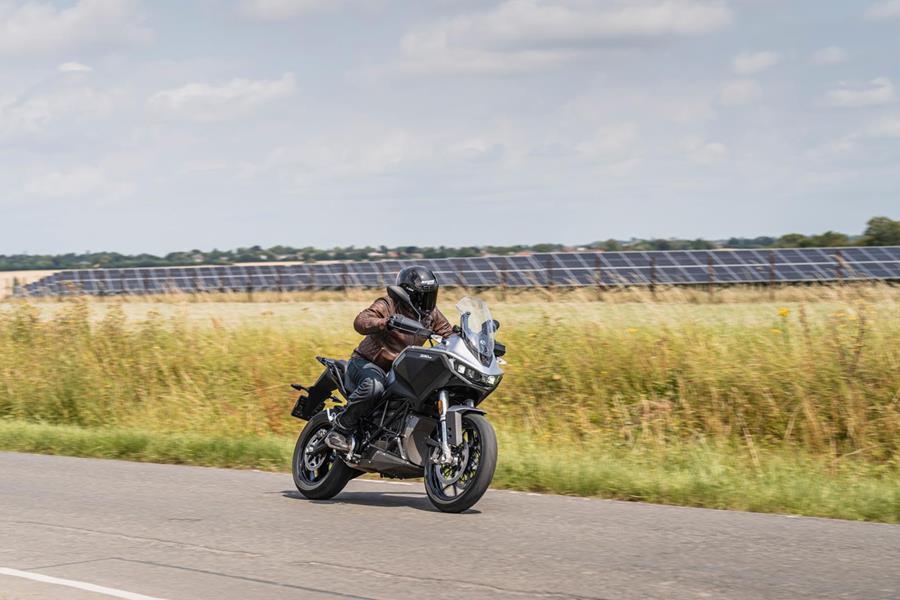
The DSR: A Comfortable and Practical Everyday Rider
The DSR is designed for comfort and practicality, making it an ideal choice for daily commutes and shorter trips. Its spacious ergonomics and smooth ride quality make it effortless to handle, even in urban traffic.
Key Features:
- Comfortable Riding Position: Upright seating and wide handlebars provide a relaxed riding posture, reducing fatigue on longer trips.
- Smooth and Effortless Handling: The DSR's suspension is tuned for comfort and stability, absorbing bumps and potholes with ease.
- Fuel Efficiency: The DSR boasts excellent fuel economy, making it a cost-effective choice for daily commuting.
Practical Implications:
The DSR's focus on comfort and practicality translates into a number of real-world benefits:
- Reduced Fatigue: The comfortable riding position minimizes fatigue, making it ideal for long commutes or city riding.
- Enhanced Safety: The smooth and predictable handling provides increased control and stability, leading to enhanced safety.
- Lower Running Costs: The DSR's excellent fuel economy translates into lower fuel bills, making it a cost-effective choice.
Comparison to Similar Technologies:
While the DSR excels in comfort and practicality, it is not designed for aggressive riding or long-distance touring. Compared to sports bikes, it lacks the performance and agility for track days or high-speed thrills. However, it outperforms dedicated touring motorcycles in terms of fuel efficiency and ease of use in urban environments.
Important Note: The DSR's strengths lie in its comfortable riding experience and practicality for daily commutes. If your needs include high-speed performance or long-distance touring, other motorcycle models may be more suitable.
Shared Chassis with the DSR/X
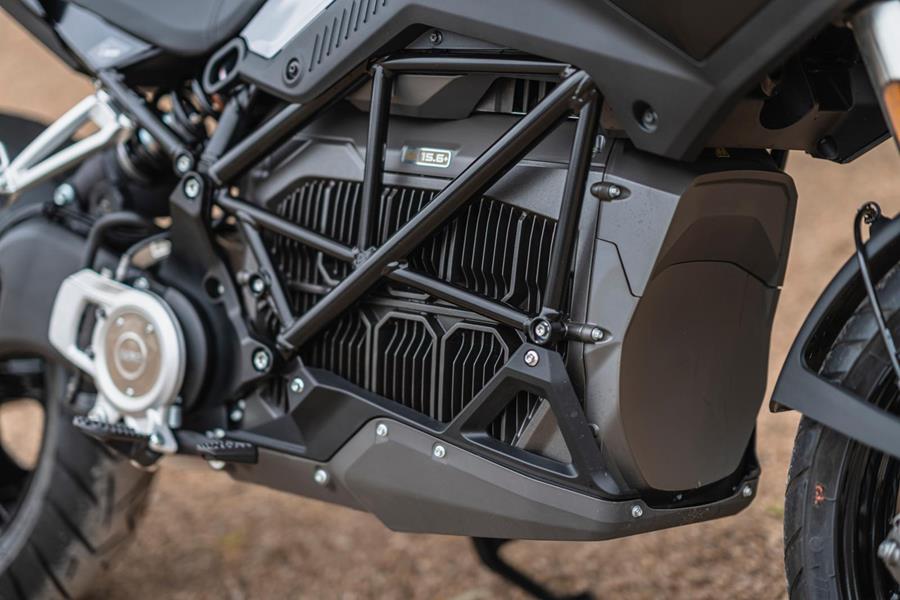
Triumph Tiger 900: DSR vs. DSR/X - Wheel Choice Impacts Performance
The Triumph Tiger 900 DSR and DSR/X share a foundation of robust components, including:
- Steel trellis frame: Provides a balance of rigidity and flexibility for both models.
- Showa suspension: Fully adjustable front and rear suspension for optimal ride quality and handling.
- J.Juan brakes: Reliable and responsive braking system for confident deceleration.
- Pirelli Scorpion Trail II tires: Versatile tires designed for both on and off-road use.
- Identical steering geometry and seat height: Consistent handling characteristics and rider ergonomics.
The main difference: Wheel choice
- DSR: Cast aluminum wheels for a lighter weight and greater durability.
- DSR/X: Spoked wheels for increased strength, particularly for off-road riding.
Important Note: Despite the DSR using cast wheels, it is surprisingly 5kg lighter than the DSR/X. This weight difference is largely attributed to the different wheel design itself.
Key Takeaways:
- DSR: Ideal for riders who prioritize overall weight, handling, and a more road-oriented riding experience.
- DSR/X: Best suited for riders who frequently venture off-road and prioritize wheel strength and durability.
Practical Implications:
- Cast wheels on the DSR offer better fuel efficiency and a sportier feel on paved roads.
- Spoked wheels on the DSR/X provide greater resilience to impacts and the ability to run lower tire pressures for improved off-road traction.
Comparison with Similar Technologies:
Both models compete in the adventure touring segment with rivals like the BMW F 850 GS, Yamaha Ténéré 700, and Ducati Multistrada V2. However, their distinct wheel options cater to specific rider preferences within this category.
Riding Position and Handling
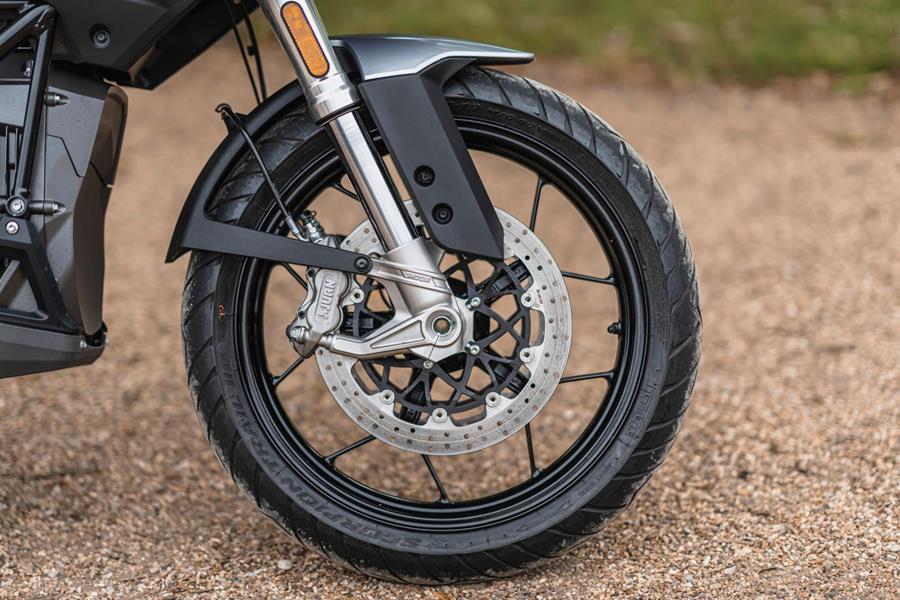
Riding Experience:
The DSR boasts a substantial feel, largely due to its well-integrated adjustable screen. This screen effectively deflects wind, enhancing rider comfort on long journeys.
Ergonomics:
- Riding Position: The DSR offers a spacious riding position, comfortably accommodating riders of all sizes. The seat height is claimed at 828mm, offering a commanding view but remaining manageable for shorter riders.
- Seat Design: The seat is thoughtfully designed to provide security for smaller riders, allowing them to comfortably ground their feet.
Handling:
The DSR's low center of gravity, heavily influenced by its battery placement, significantly enhances low-speed handling. This translates to a stable and predictable ride, especially in urban environments.
Key Takeaways:
- The DSR features a well-engineered wind screen, offering excellent wind protection.
- The spacious riding position accommodates riders of various sizes.
- The DSR's low center of gravity ensures exceptional low-speed handling.
Real-World Applications:
The DSR's combination of comfort and handling makes it an ideal choice for both long-distance touring and daily commutes. Its ability to navigate tight spaces and heavy traffic with ease underscores its versatility.
Cornering and Braking Performance
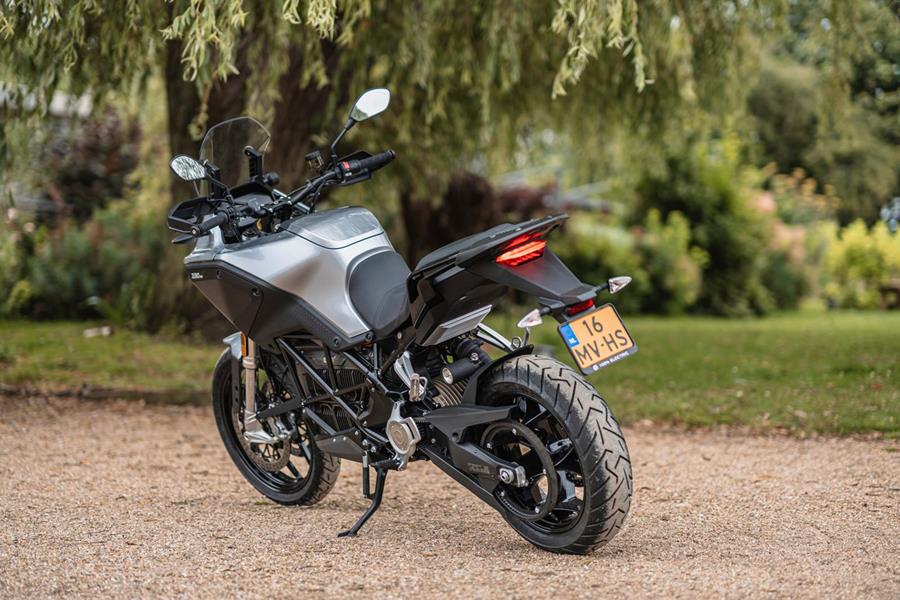
DSR Handling and Braking Performance
The DSR demonstrates a strong balance in cornering, exhibiting precise steering and effective weight management. This capability allows riders to confidently navigate curves with minimal effort and maintain control.
Suspension Performance
The DSR's suspension delivers a commendable ride quality, providing a comfortable experience for both rider and passenger. However, while it effectively absorbs road imperfections, it may not be considered exceptional when compared to other high-end motorcycles.
Braking System
The DSR employs brakes with a relatively soft initial bite, meaning the initial pressure applied to the brake lever results in a gradual deceleration. However, the system delivers strong stopping power, ensuring effective braking performance overall.
ABS System
Key Takeaway: The DSR's standard ABS system is not lean-sensitive, meaning it does not adjust braking pressure based on the bike's lean angle. This can potentially lead to reduced braking effectiveness in extreme cornering scenarios.
Comparison:
Pro: Standard ABS provides enhanced safety compared to motorcycles without the feature.
* Con:* Lack of lean-sensitive ABS reduces braking efficiency in extreme lean angles, potentially affecting rider confidence in challenging situations.
Real-world Implications: While the DSR's overall braking performance is commendable, the absence of lean-sensitive ABS may be a factor to consider for riders who frequently engage in aggressive riding, particularly on winding roads or tracks.
Engine Power and Performance
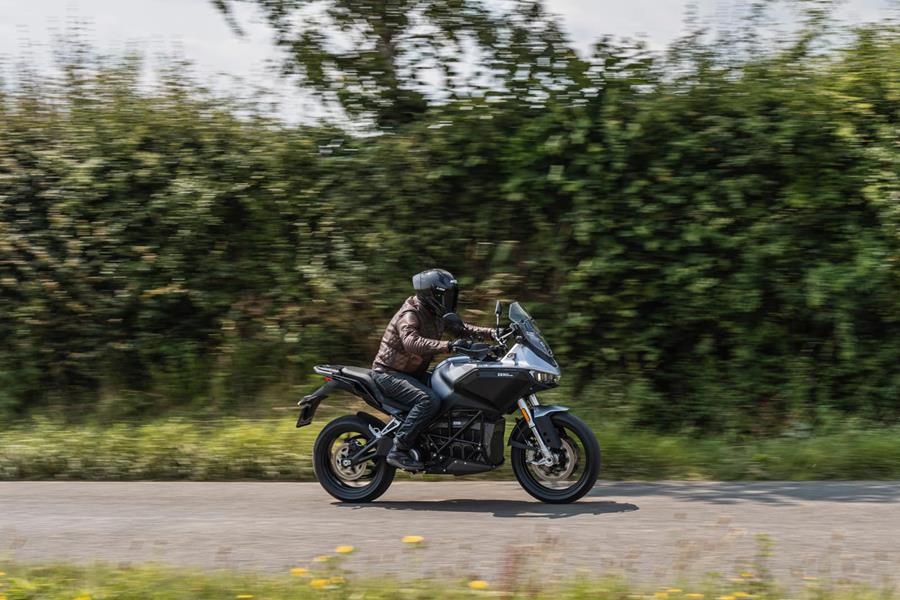
DSR: A2-Compliant Performance
The DSR utilizes the same air-cooled engine as its sibling, the DSR/X, but features electronically-limited power and torque outputs. This enables it to meet the A2 license requirements while still offering a dynamic riding experience.
Technical Specifications:
- Engine: Air-cooled,
- Maximum Power: 70 bhp (52 kW)
- Maximum Torque: 125 lb·ft (170 Nm)
Riding Modes:
The DSR offers multiple riding modes to adjust the engine's responsiveness:
- Sport: Provides the most aggressive throttle response, delivering a spirited acceleration.
- Canyon: Strikes a balance between performance and comfort, suitable for winding roads.
Key Takeaways:
- The DSR provides A2-compliant performance without compromising on riding enjoyment.
- Electronic power and torque limitations enable compliance with A2 license requirements.
- Multiple riding modes cater to different riding styles and preferences.
Practical Implications:
This approach allows younger or less experienced riders to enjoy a powerful motorcycle while adhering to licensing regulations. The DSR provides a gateway to the world of large-displacement motorcycles, offering a balance between performance and accessibility.
Range and Charging Time
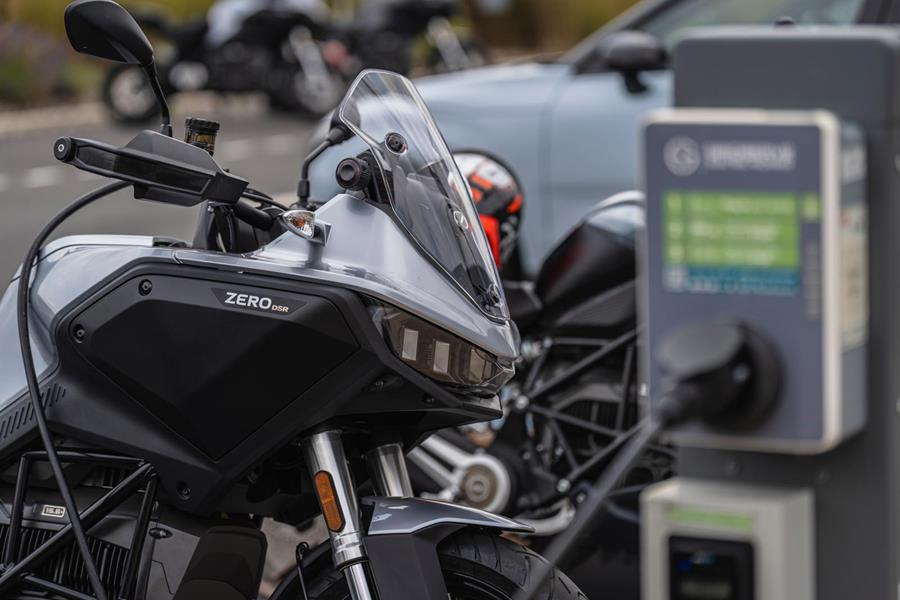
DSR Battery and Range
The DSR electric vehicle shares the same battery pack as its sibling, the DSR/X, but with a reduced capacity of 13.6kWh. This results in a claimed range of 100 miles in mixed driving conditions.
Real-World Range:
* Our test ride yielded a range of approximately 58 miles before the battery reached 50%.
* Speed significantly impacts range:
* Expect around 75 miles at 70 mph.
* At higher speeds, range can drop to 55 miles.
Charging
Maximum Charging Rate:
* The DSR supports a maximum charging rate of 3.3kW.
Charging Times:
* Household Socket: 6 hours for a full charge.
* Public AC Charger: Approximately 4 hours for a full charge.
Important Note: Charging times can vary based on factors such as ambient temperature, battery state of charge, and charger type.
Comparison to Similar Technologies
Compared to other electric cars in the same class, the DSR's range is on the lower end. Vehicles with larger battery capacities typically offer ranges exceeding 150 miles. However, the DSR's smaller battery size contributes to its competitive pricing and lighter weight.
Practical Implications
The DSR's range is suitable for daily commutes and short trips. However, it might not be ideal for long road journeys without adequate charging infrastructure. For users primarily driving within city limits, the DSR's range could be sufficient.
Optional Rapid Charger for Faster Recharging
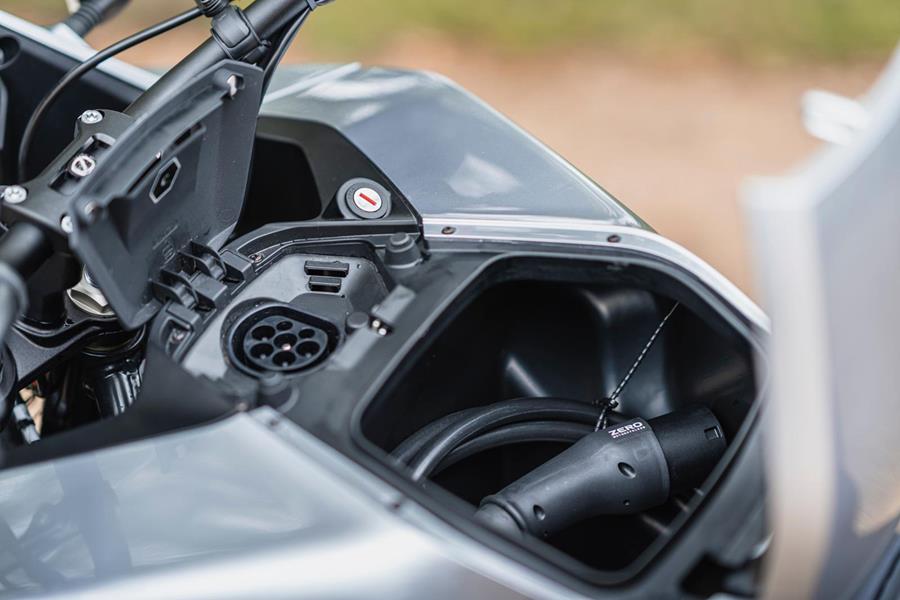
Rapid Charging: A Trade-Off
The DSR offers an optional 6kW Rapid Charger, significantly reducing charging time.
Technical Specifications
- Charging Time: Approximately 1.5 hours for a full charge with a three-phase AC connection.
- Power Output: 6kW
- Connection Type: Three-phase AC (Type 2 connector typically)
- Weight: Adds a significant amount of weight to the DSR.
- Storage Space: Occupies storage space in the DSR's "frunk" (front trunk).
Pros and Cons
Pros:
- Reduced charging time: Substantially faster than standard AC charging, making it ideal for frequent trips.
- Increased convenience: Less time spent waiting for the vehicle to charge.
Cons:
- Weight and space: The Rapid Charger increases the DSR's weight and takes up valuable storage space.
- Cost: The Rapid Charger comes at an additional cost, which may not be feasible for all users.
Important Notes
- Availability: The 6kW Rapid Charger may not be available in all regions or markets. It is crucial to check with your local dealer for availability.
- Infrastructure: Access to a three-phase AC connection is essential for utilizing the full potential of the Rapid Charger.
Comparison with Similar Technologies
The 6kW Rapid Charger provides a faster charging experience compared to standard AC chargers but falls short of DC fast charging options. DC fast charging allows for significantly faster charging times but typically requires dedicated infrastructure and comes at a higher cost.
Real-World Applications
The Rapid Charger is beneficial for users who require frequent charging or have limited time to charge their DSR, such as long-distance drivers. It is also a viable option for individuals who have access to a three-phase AC connection at home or at work.
Reliability Improvements over Previous Models

Zero Motorcycles: Evolving Reliability
Early Zero models, particularly those released before the DSR/X and DSR, struggled with various issues related to water ingress, moisture in the TFT dash, and battery reliability.
Production Shift and Quality Improvements
"The DSR/X and DSR, however, represent a notable shift in quality and reliability."
- Zero Motorcycles spokesperson
This improvement is attributed in part to the relocation of production to the Philippines, which has reportedly led to enhanced manufacturing processes and stricter quality control measures.
Key Takeaways:
- Improved Manufacturing: The move to the Philippines has potentially resulted in better-built motorcycles with fewer defects.
- DSR/X and DSR: These models appear to have addressed previous water ingress and battery issues, making them more reliable for riders.
Real-World Implications:
These improvements mean that Zero Motorcycles are increasingly attractive to riders who want a reliable and durable electric motorcycle. The DSR/X and DSR models in particular are well-suited for long-distance touring and off-road adventures, as their improved water resistance and battery life make them capable of handling demanding conditions.
Note: While production relocation has likely contributed to increased reliability, it's important to note that user experience and specific issues can vary widely. As with any motorcycle, regular maintenance and careful operation are crucial for ensuring optimal performance and longevity.
Warranty and Battery Lifespan
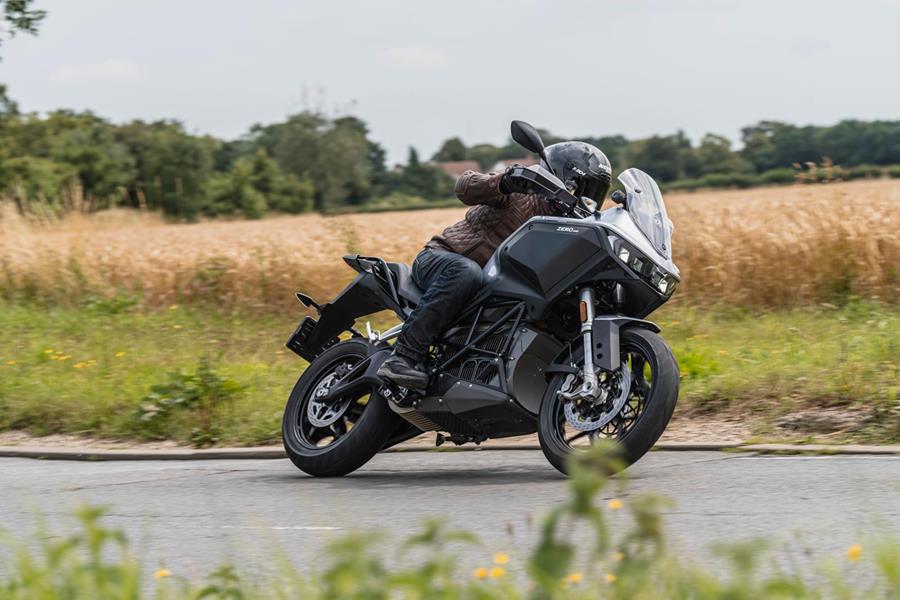
Zero Motorcycles DSR Warranty and Battery Life
The Zero DSR boasts a comprehensive warranty and impressive battery longevity, making it an attractive choice for both commuting and longer rides.
Warranty Details
- Coverage: 5-year, unlimited mileage warranty covering both the motorcycle and its battery.
- Included: Covers defects in materials and workmanship, providing peace of mind for long-term ownership.
Battery Longevity
- Capacity Retention: Zero claims the battery will retain 80% of its original capacity after 1350 charge cycles.
- Real-World Translation: This equates to significantly exceeding 100,000 miles of riding, demonstrating exceptional battery performance.
Key Takeaway:
The Zero DSR's warranty and battery longevity demonstrate a commitment to long-term reliability and performance. This translates to lower maintenance costs and a superior riding experience over a extended period.
Comparison with Competitors
While other electric motorcycle brands offer warranties, Zero's 5-year, unlimited mileage coverage stands out. Additionally, the claimed battery longevity surpasses many competitors, making the DSR a leader in long-term value and dependability.
Note: Battery life will inevitably vary based on riding conditions, charging practices, and environmental factors.
Value Compared to Rivals
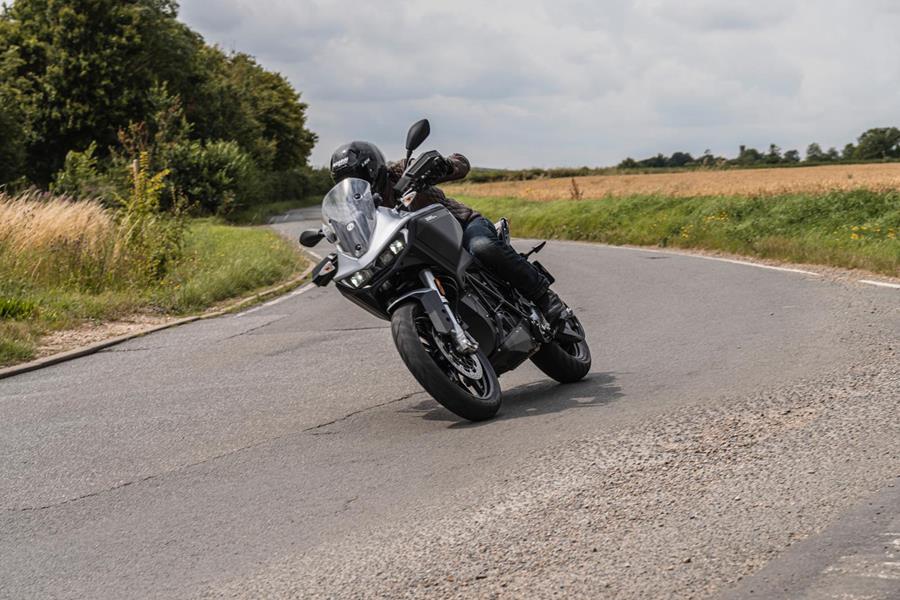
DSR Pricing and Incentives
The DSR electric motorcycle has a retail price of £17,000.
Important Note: Unlike other Zero models, the DSR does not come standard with a domestic UK charger. This means buyers will need to purchase a separate charger for home use.
Incentives:
- The DSR is not eligible for the UK's Plug-In Motorcycle Grant (PIMG). This is due to its price exceeding the PIMG's £10,000 price cap.
- However, the DSR represents a significant price reduction compared to the higher-end DSR/X model. The DSR is £3,950 less than the DSR/X, providing a more budget-friendly option for riders.
Real-World Implications
The lack of a bundled charger could lead to additional costs for DSR owners. They will need to factor in the price of a suitable charger, as well as installation costs if required. The PIMG ineligibility may also be a consideration for some buyers, potentially influencing their purchase decision.
Comparison with the DSR/X
- Price: The DSR offers a substantial price advantage over the DSR/X.
- Features: The DSR/X includes a higher-capacity battery and upgraded suspension components.
- Target Market: The DSR is likely to appeal to riders seeking a more affordable electric motorcycle with good performance, while the DSR/X targets riders who prioritize maximum range and premium features.
Cost Savings and Running Costs
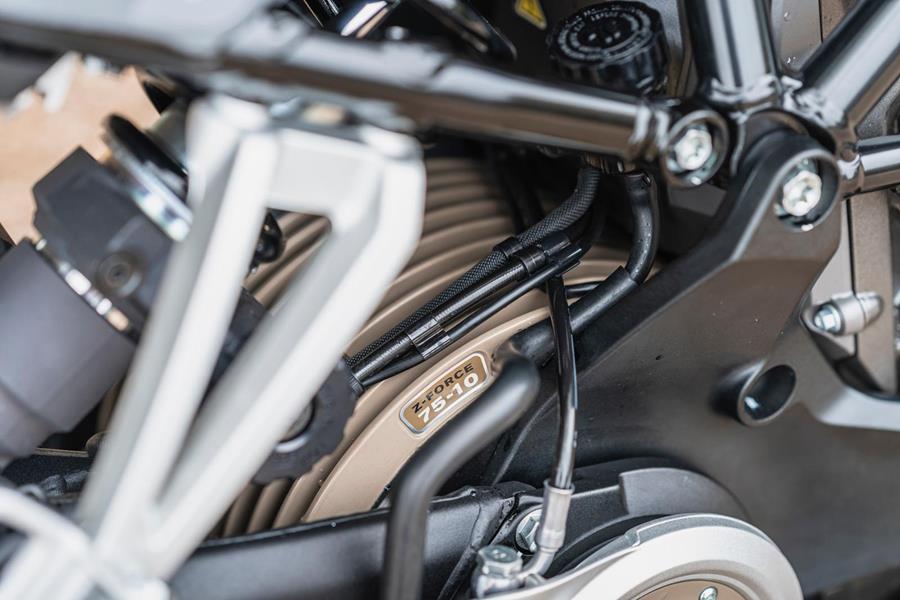
PCP Financing for Electric Motorcycles
A typical PCP quote for an electric motorcycle might involve a £4,000 deposit and 36 monthly payments of £253.42.
Cost Breakdown
- Deposit: £4,000
- Monthly Payment: £253.42
- Total Cost (excluding interest): £9,123.12
- Total Cost (including typical interest): £10,000 - £12,000 (this varies based on loan terms and interest rates)
Cost Advantages
While the initial outlay can seem substantial, electric motorcycles offer significant long-term cost savings:
-
Fuel Costs: Charging at home typically costs between 1-3 pence per mile**, compared to __10-15 pence per mile for petrol motorcycles. This translates to a potential annual savings of £500.
-
Maintenance: Electric motorcycles often require less maintenance than petrol counterparts. This results in lower servicing costs over the motorcycle's lifespan.
-
Road Tax: Most electric motorcycles are exempt from road tax in the UK, further reducing ownership costs.
Important Notes
-
Battery Range: Battery range for electric motorcycles varies depending on model and usage. However, most modern models can achieve a range of 100-150 miles on a single charge.
-
Charging Infrastructure: Access to charging points is crucial for electric motorcycles. While home charging is readily available, public charging infrastructure is still developing.
Comparison with Petrol Motorcycles
While initial cost might be higher for an electric motorcycle, the long-term cost savings and environmental benefits make them a compelling option for many riders.
Comparing the DSR to Petrol Rivals
DSR: A Premium Adventure Bike in a Competitive Market
The DSR stands out as a premium adventure bike, but faces stiff competition from established rivals like the Suzuki V-Strom 800RE, Triumph Tiger 850 Sport, and BMW F800GS. While these competitors offer attractive price points, starting around £10,000 new, the DSR targets a different segment with its focus on advanced features and sophisticated technology.
Key Features and Specifications:
- Engine: The DSR packs a powerful engine, often featuring a larger displacement and higher horsepower output compared to its rivals.
- Suspension: The DSR boasts high-quality adjustable suspension, providing superior comfort and handling, especially on rough terrain.
- Electronics: Advanced rider aids like traction control, multiple riding modes, and cruise control are standard equipment on the DSR.
- Ergonomics: The DSR prioritizes long-distance comfort with a spacious riding position and adjustable windscreen.
- Technology: Features like LED lighting, TFT displays, and smartphone connectivity are often found on the DSR.
Pros & Cons:
Pros:
- Superior Performance: The DSR offers a significant performance advantage over its rivals, particularly in terms of power and refinement.
- Advanced Features: The DSR comes standard with a suite of cutting-edge technology and rider aids, enhancing both safety and enjoyment.
- Premium Build Quality: The DSR often utilizes high-end materials and construction, showcasing its premium positioning.
Cons:
- Price Premium: The DSR carries a considerably higher price tag compared to its competitors.
- Weight: Advanced features and higher-quality components can lead to a heavier overall weight.
Real-World Applications:
The DSR is ideal for:
- Adventure Touring: Its long-distance comfort and off-road capability make it a perfect choice for long rides and exploring new landscapes.
- Daily Commuting: Its sleek design and high-quality components make it a stylish and comfortable option for urban commuting.
- Track Days: The sport-oriented DSR can handle spirited riding on the track, offering a thrilling experience.
Important Notes:
The DSR is a premium adventure bike designed for riders seeking advanced features, sophisticated technology, and a high level of performance. While the higher price point may be a deterrent for some, the DSR offers a unique blend of comfort, capability, and style for those seeking an exceptional riding experience.
Equipment and Features
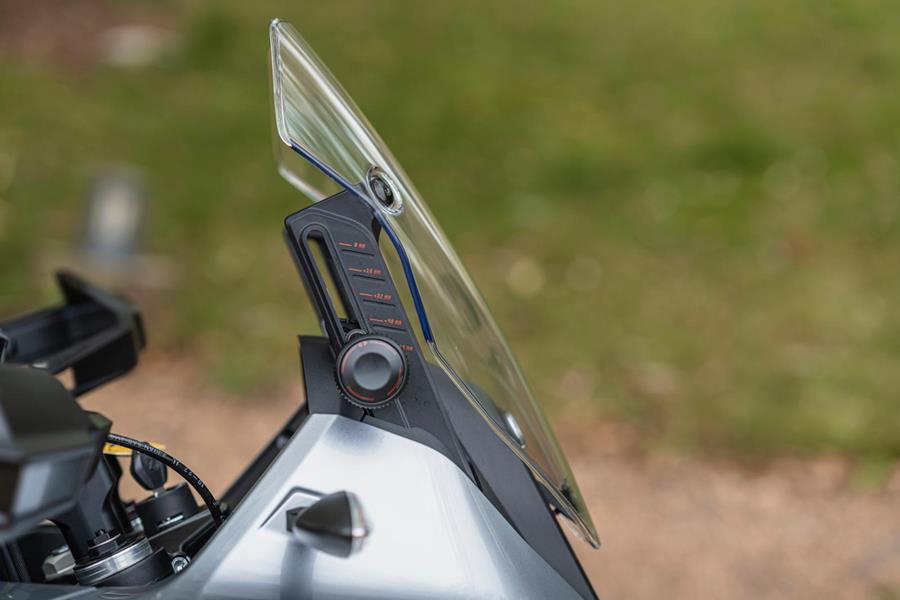
DSR vs. DSR/X: A Comparison of Features
The DSR and DSR/X share a common base but differ significantly in their performance and technological capabilities. Here's a breakdown of key differences:
Performance and Power:
-
DSR:
- Motor: Reduced power and torque compared to the DSR/X.
- Battery: Restricted capacity, resulting in shorter range.
- Charging: Slower charging speeds.
-
DSR/X:
- Motor: Full power and torque output.
- Battery: Larger capacity for extended range.
- Charging: Faster charging capabilities.
Rider Aids:
-
DSR:
- ABS: Basic ABS system without lean sensitivity.
- Traction Control: Limited traction control features.
- Hill-Hold Control: Absent.
-
DSR/X:
- ABS: Advanced lean-sensitive ABS for enhanced braking performance.
- Traction Control: Sophisticated traction control system for improved stability.
- Hill-Hold Control: Included for easier hill starts.
Key Takeaways:
- The DSR offers a more affordable entry point into the adventure motorcycle segment, but sacrifices some performance and technology.
- The DSR/X caters to experienced riders seeking maximum power and advanced rider aids for demanding off-road conditions.
Practical Implications:
- The DSR is suitable for casual riders who prioritize affordability and basic functionality.
- The DSR/X empowers riders to tackle challenging terrain with confidence and enhanced safety.
Comparison Notes:
- The DSR and DSR/X differ significantly in their intended purpose and target audience.
- Riders seeking a high-performance, technologically advanced machine should consider the DSR/X.
- Riders seeking a budget-friendly option with basic adventure capabilities should explore the DSR.
Positive Features and the Maximise Your Ride Offer
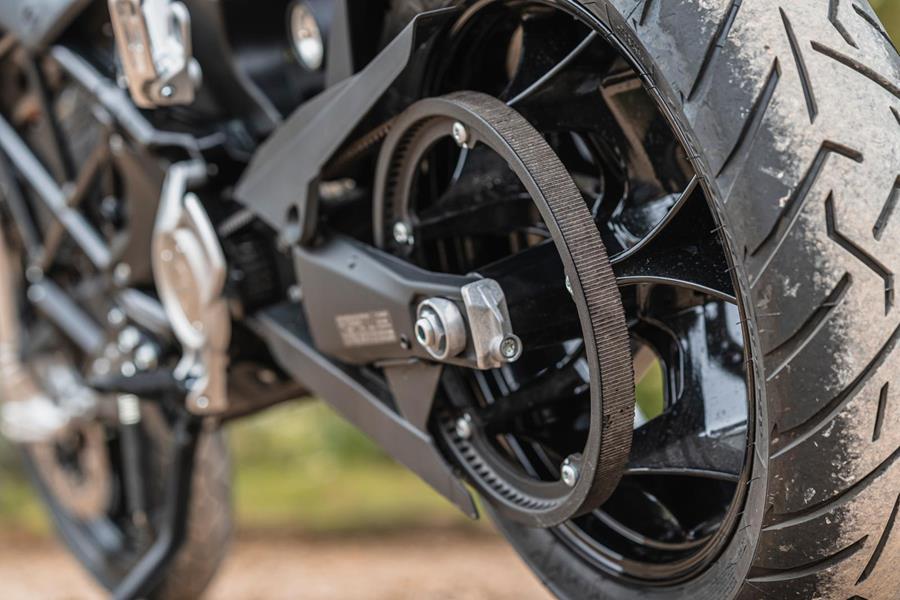
The DSR: A Versatile Electric Motorcycle
The DSR retains its impressive feature set, including:
- 5-inch TFT Display: Customizable and large for excellent visibility.
- Cruise Control: Ensures effortless highway riding.
- Walking-Speed Reverse Mode: Maneuvering in tight spaces is a breeze.
- Five Riding Modes: Tailor the bike's performance to your needs, from Eco to Sport.
- Standard Handguards and Adjustable Screen: Provide protection and wind deflection.
Maximise Your Ride Bundle: Unlocking Performance
For an additional £350, the "Maximise Your Ride" bundle significantly enhances the DSR:
- 6kW Rapid Charger: Reduces charging time considerably.
- Power Boost: Increases horsepower from the standard 47bhp to 80bhp.
- Increased Torque: From 106lb·ft to 144lb·ft, for exceptional acceleration.
- Top Speed Increase: From 90mph to 100mph.
- Lean-Sensitive ABS and Traction Control: Enhanced safety and handling in corners.
Key Takeaways:
- The DSR offers a compelling combination of practicality and performance.
- The "Maximise Your Ride" bundle represents exceptional value, significantly enhancing the bike's capabilities.
- With its versatile features and powerful performance, the DSR is a great option for both daily commuting and weekend adventures.
Comparison with Similar Technologies:
While the DSR competes with other electric motorcycles, its "Maximise Your Ride" bundle offers a unique proposition, providing a significant horsepower and torque increase at a relatively affordable price point. This makes the bundle particularly attractive for riders seeking a performance upgrade without breaking the bank.